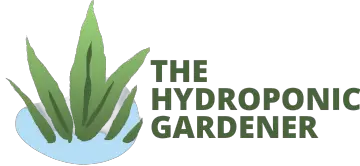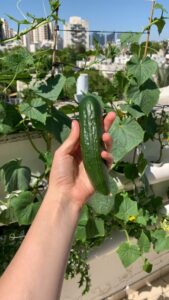If you’re a beginner hydroponic gardener, then you may be wondering how to get rid of algae in your system. Algae forming on the surface of water and plants can be a big problem: it can choke out plants and lead to decreased yields, and it can be difficult to get rid of.
In this blog post, I will discuss what algae are, why it’s a problem for hydroponics systems, and how to prevent and kill algae in your garden.
Why are algae growing in my hydroponic system?
Algae is a type of plant (not a bacteria or fungi) that grows in water and soil. Therefore, it can thrive and reproduce quickly in hydroponic systems. The two famous types of algae are green algae and black algae. Normally, you would come across green algae in your system.
This is because it gets most of its nutrition from light, rather than soil or other growing mediums.
There are several factors that can contribute to the growth of algae in your hydroponic garden, including:
- · Nutrient imbalance
- · High amounts of light and heat
- · Excessive organic matter in the water (from dead plant material like broken roots and hydroponic plants leftovers)
Why is algae a problem for hydroponics?
While algae itself may not cause too many problems for plants, the way that it grows and spreads can be detrimental to your garden.
For example, algae can cover the surface of water and decrease light exposure for plants, which may lead to decreased yields. It can also block air circulation, potentially killing off your plants.
In addition, algae can be difficult to get rid of once it has established itself in your system.
This is because even if you manage to remove all the visible algae, it can still make its way back into your garden again and again through spores or by simply surviving under the surface.
How do you stop algae in hydroponics?
Fortunately, there are several things you can do to prevent and kill algae in your hydroponics system.
The first step is to make sure that your nutrient levels are balanced, as an imbalanced nutrient supply can encourage the growth of algae. You should also be sure to clean out your system regularly, removing any dead plant material. In fish tanks there is also uneaten fish food that may be contributing to the growth of algae. I state that because some people convert fish tanks to hydroponic systems.
Finally, you can introduce specific types of bacteria or fungi into your system that will help to inhibit algae growth and even kill existing algae colonies. For example, Bacillus laterosporus is a bacteria species commonly used in hydroponics to combat algae, as it is able to produce a chemical that is toxic to algae cells.
Overall, if you are vigilant about managing your hydroponics system and ensuring that it’s in balance, you can keep algae under control and enjoy healthy plants and great yields.
After killing algae, sanitize the system and the water reservoir to make sure there are no algae spores left and prevent them from returning.
Three common ways to clean algae are
- hydrogen peroxide (kills them)
- Algaecide (kills them until they dissolve)
- Organic bacteria or fungi (kills)
- Bleach (cleans, not kills)
Can I use hydrogen peroxide to kill algae in hydroponics?
Hydrogen peroxide is a common cleaning agent that can be used to remove algae from hydroponic systems. It works by breaking down the cell walls of algae and killing off the algae cells. However, it is important to use hydrogen peroxide in moderation, as overusing it can damage your plants or water system.
To use hydrogen peroxide to kill algae in your hydroponic system, you should start by cleaning the system thoroughly to remove any existing algae growth.
Next, you should add a small amount of hydrogen peroxide to the water and let it sit for several hours or overnight. This will allow the hydrogen peroxide to penetrate the algae cells and kill them.
Once the algae is dead, you should remove any remaining hydrogen peroxide from the system. Just clean it the way you normally clean a hydroponic system.
You might need to repeat this process several times to completely eliminate all of the algae from your garden.
If you don’t know how to use hydrogen peroxide, it’s a versatile cleaning hack:
Can you use algaecide in hydroponics?
There is some debate about whether or not it’s safe to use algaecide in a hydroponic system.
On the one hand, many gardeners have successfully used algaecides to kill off algae and prevent its growth in their hydroponics systems.
In addition, there are several different types of algaecide available, which may allow you to choose the one that is best suited to your system and specific algae problem.
However, some gardeners argue that using algaecides in hydroponics can be harmful to plants and other organisms in the system. For example, certain types of algaecide are toxic to beneficial bacteria, which are critical to the functioning of hydroponic systems.
This is a video about algae in a fish tank. It’s close enough to a hydroponic system since there are living creatures inside:
How to kill algae organically?
There are many different methods that can be used to kill algae organically in a hydroponic system. As I said before, one popular option is to use natural bacteria or fungi, such as Bacillus Laterosporus, that have been specifically formulated for this purpose.
Other organic methods include adding certain nutrients or supplements to the water to inhibit algae growth. For example, copper sulfate or selenium can be added to the water to physically block algae growth.
Additionally, regular cleaning and maintenance of your hydroponic system will help to keep algae at bay by reducing the chances that it will take hold in the first place. This might include regularly changing out the water reservoir or cleaning the system with a mild solution of hydrogen peroxide or vinegar.
how do you clean dead algae from a hydroponic system?
One of the best ways to clean dead algae from a hydroponic system is to use an algaecide. It basically melts the algae.
There are several different types of algaecides available, so it’s important to do some research beforehand to choose one that is specifically formulated for cleaning algae in hydroponic systems and that won’t harm your plants or other organisms in the system.
You can also use a combination of mechanical and chemical methods to remove algae from your hydroponic system. For example, you can siphon out excess water or detach and scrub off clumps of algae manually with a soft brush.
Once you have removed as much algae as possible from your system, you can then use an algaecide or other chemical treatment to help kill off any remaining algae and prevent it from growing again in the future.
How to clean algae from roots
One of the best ways to clean algae from the roots in a hydroponic system is to use an algaecide or hydrogen peroxide. Algaecides work by breaking down the cell walls of algae, while hydrogen peroxide works by dissolving and killing the algae cells.
To clean algae from your plant roots using an algaecide or hydrogen peroxide, start taking the plants out of the water and wash the roots. If they are too gentle to wash under running water, enter them into a bowl of fresh water and move around to separate as much algae as possible from the roots.
When you have separated most of the algae from the roots, add some algaecide or hydrogen peroxide to the water and let it sit for several hours or overnight. This will help break down and kill off any remaining algae in your system.
Finally, return your plants to the hydroponic system and continue monitoring the water and roots for any signs of new algae growth. If necessary, you can repeat this process as needed for a complete system clean and to keep it free from algae.
How to clean algae from clay pebbles, hydroponic sponges and rock wool?
There are a few different strategies that you can use to clean algae from your clay pebbles, hydroponic sponge, or rock wool.
One option is to regularly remove and replace these components of your system as needed, which can help to prevent algae from accumulating in the first place.
Another strategy is to use an algaecide or other chemical treatment. This can be a more effective method, but you will need to take care to choose a product that is safe for the specific types of materials in your hydroponic system and won’t harm your plants or other organisms.
Alternatively, you may want to try a mechanical method of removing algae from your hydroponic system. For example, you can use a soft brush to gently scrub the algae off of your clay pebbles or sponge, or you may want to try running fresh water through the materials to help rinse away any built-up gunk.
Whatever method you choose, it’s important to be thorough and consistent in your cleaning process, as this will help you keep your hydroponic system free of algae and ensure that your plants continue to thrive.
Ways for preventing algae growth
in a hydroponic system include maintaining good water quality, keeping plants healthy and well-fed, and cleaning your system regularly.
One important factor to consider when trying to prevent algae growth is the nutrient levels in your hydroponic system. An imbalanced supply of nutrients, either too high or too low, can encourage the growth of algae.
Another key element to preventing algae is ensuring that your plants are healthy and well-fed. This means providing them with the right amount of water, light, and nutrients for their growth stage.
Finally, regular cleaning of the system itself is essential to preventing the buildup of algae in hydroponics systems.
Conclusion:
Whether you are dealing with existing algae growth in your hydroponic system or trying to prevent it from happening in the first place, there are a variety of steps that you can take to clean and maintain your system effectively. Some key strategies include using an algaecide or other chemical treatment, regularly replacing components of your system, and using a combination of mechanical and chemical methods to remove algae from your hydroponic system. By taking the time to choose the right approach for your specific needs and being consistent in your cleaning process, you can keep your hydroponics healthy and thriving.
write 2 FAQs:
How do you clean algae in a hydroponic system?
1. The first step to cleaning algae from a hydroponic system is to remove as much of the algae as possible using a soft brush or other tools. You can use algaecide, hydrogen peroxide, or bleach.
How to stop algae from growing in hydroponics?
2. There are several different strategies that you can use to prevent algae growth in your hydroponics, including using algaecides or other chemical treatments, regularly replacing system components, and using a combination of mechanical and chemical methods to clean your plants and materials.





